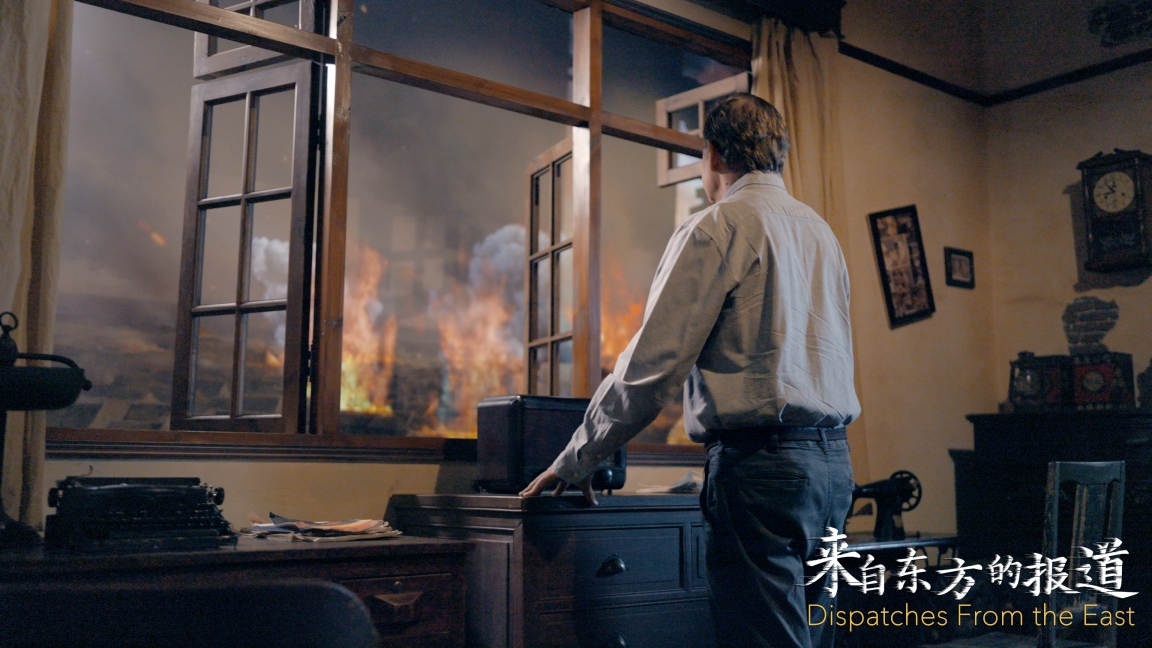

"Dispatches from the East" is a five-part documentary series about Chinese people's devotion to the final victory in the World Anti-Fascist War.
Leaving behind the success of "The Forever Walk: China," a documentary series chronicling two-time Pulitzer Prize winner and National Geographic explorer Paul Salopek's 6,700-kilometer trek across the country, Shanghai-based filmmaker Wang Xiangtao immediately set his eyes on a special project – the five-part documentary series, "Dispatches from the East."
Drawing on the perspectives of five renowned foreign correspondents – Edgar Snow, Agnes Smedley, John B. Powell, Jack Belden and Harrison Forman – the series highlights the courage, resilience and unity of the Chinese people under the leadership of the Communist Party of China (CPC) during the war against Japanese invasion.
The full series will air at 10pm on September 2 on Dragon TV, just a day before China's grand military parade at Beijing's Tian'anmen Square to mark the 80th anniversary of China's victory in the War of Resistance Against Japanese Aggression and the World Anti-Fascist War.
"Chinese people's sacrifices and devotion to the final victory in the World Anti-Fascist War go far beyond what many could imagine," said chief director Wang. "These foreign journalists bore witness to both the brutality of war and the heroism of the Chinese people."
The project took Wang and his team roughly six months to complete. Each episode runs just six to seven minutes, reflecting a bold, innovative approach to documentary production tailored to the fast-paced viewing habits of today's audiences.
One of the key challenges for the production team was distilling a complex span of historical events into a concise documentary format.
"The greatest difficulty lay in scripting, namely how to construct a coherent and compelling narrative from the historical events of the time," Wang noted.
Within a very limited runtime, the narrative based on the words and images of the five foreign journalists, stretches across more than a decade.
"These individuals, almost by chance, became war correspondents," Wang said. "With keen perception, they sensed that the CPC was destined to change the course of the nation. Another thing these foreign correspondents had in common was their commitment to reporting on China with fairness and objectivity."

Chief director Wang Xiangtao (left) talks with American historian Andrew Field, who is the host of the documentary.

The project took Wang and his team roughly six months to complete.
As some of the correspondents, like Snow and Smedley, are so familiar to Chinese viewers, it compelled Wang to look for more not-so-well-known stories of these personalities from English-language historical materials.
For example, American journalist Snow is best known for "Red Star Over China," yet few realize that before it, he had already published "Far Eastern Front," drawn from his own experiences in Shanghai during the early stages of the War of Resistance Against Japanese Aggression.
The book unfortunately received little attention upon release in 1933. Thanks to this project, Wang read "Far Eastern Front." The book stands as powerful evidence that China's fight against fascism began long before many realized, enduring for 14 years in its entirety.
The documentary also captures many historical sites and landmark buildings connected with these foreign correspondents.
For instance, the Shanghai Telecom Museum was among the first places Snow visited upon his arrival in Shanghai. The iconic Wukang Building was once one of Smedley's residences in Shanghai.
A vintage Remington typewriter, the same model once used by Snow, was also borrowed from a Shanghai collector as a prop.
Dr Andrew Field, the host and narrator of the documentary, is an old friend to Wang, with the duo having cooperated on several documentary projects. The American historian and professor from Duke Kunshan University has lived in China for over 20 years. He is widely known for his extensive research on modern Chinese history.
In the series, Field guides audiences through Shanghai, revisiting the legendary stories of foreign correspondents who documented China's fight for survival.

Live-action footage, traditional CG (computer graphics), and cutting-edge AI (Artificial Intelligence) are combined in the production.

The iconic Wukang Building was once one of Agnes Smedley's residences in Shanghai.
Combining live-action footage, classic CG (computer graphics), and cutting-edge AI (artificial intelligence), the production brings to life pivotal war scenes as captured through the eyes of the journalists. This approach is expected to be adopted in future projects to offer audiences a more immersive historical experience.
Having worked on documentaries of many kinds, from historical subjects to engineering projects, Wang has developed an ability to draw on different methods and weave them seamlessly into his filmmaking.
From 2021 to 2024, he followed Paul Salopek's long walk across China, from the southwest to the northeast, crossing rainforests, snowcapped ranges and arid uplands. In June, the 30th Shanghai TV Festival also presented the International Communication Award to "The Forever Walk: China (Season 3)."
Wang noted that the definition of documentary is broad nowadays. The category has grown so wide that people usually just call it "non-fiction."
For him, documentary filmmaking in China is now thriving, with a very promising outlook. The field is becoming increasingly diverse, both in form and content. A lot more subjects are being explored and many people are getting involved in this industry.
"I always believe that the essence of documentary filmmaking lies first in truth, and then in the narrative," he added. "Storytelling is vital – just as important as in fiction films. It's about how you gather a huge amount of material and weave it into a story that can truly draw the audience in."

